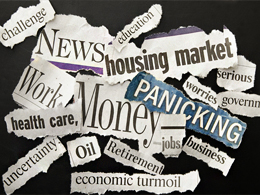 I started this blog three years ago today, on June 10, 2012. At a guess, I’ve written almost 800 posts, including links to media appearances and monthly videos. That’s about 400,000–500,000 words on the economy, the markets, and, of course, lobster rolls.
I started this blog three years ago today, on June 10, 2012. At a guess, I’ve written almost 800 posts, including links to media appearances and monthly videos. That’s about 400,000–500,000 words on the economy, the markets, and, of course, lobster rolls.
It’s been a very volatile three years for these major topic areas. Okay, maybe not lobster rolls, but certainly for the economy and markets.
Europe: plus ça change
Looking back, it’s interesting to see what’s changed and what hasn’t. For example, three years ago I was marginally convinced that the eurozone would remain intact and wrote about Syriza losing an election in Greece. Now, of course, I’m marginally convinced that the eurozone won’t hold together, and Syriza, which has gained control of the Greek government, is busily working to prove my revised conviction right.
Other things remain the same. In June 2012, I wrote the original “Teenagers with Credit Cards” post, about Greece and Europe, and recently followed it up with an updated one, using the same metaphor.
Europe hasn’t really changed that much, overall. Although we seem to be approaching the end of the road for Greece, we thought pretty much the same thing three years ago. Anyone expecting to see resolution in the near future should look back at just how long this soap opera has been going on.
The U.S.: real improvements
Here in the U.S., however, things really are different now than they were three years ago. Back then, we were painfully negotiating a reduction in federal government spending, which was ultimately resolved by the sequester spending cuts in the face of the fiscal cliff. Politics remains news, but we’ve largely solved the debt and spending issues that threatened to sink the U.S. economy—at least for the moment.
Other areas of real improvement in the past three years include:
- Unemployment, which fell from 8.2 percent to 5.4 percent
- Job creation, with 7.777 million new jobs on the books
- Consumer confidence, which increased from 64.4 to 95.4
- Consumer spending growth, which has almost doubled, from 1.67 percent to 3 percent
Back in mid-2012, I saw a continued recovery here in the U.S., and that’s still how I view it.
What does the future hold?
Looking at the past three years, I think we can see the outline of the near to medium-term future as well.
- Europe will likely continue to try more of the same, ignoring the fact that it hasn’t worked. The launch of European quantitative easing was one big breakthrough, but it seems that a similar breakthrough isn’t going to happen for Greece—at least until things get much worse.
- Trends in the U.S. should continue to be positive, and growth looks likely to accelerate despite weak periods, such as the last quarter.
Overall, looking into my crystal ball, I see continued improvement here in the U.S. and continued deadlock and conflict in Europe.


 Print
Print

